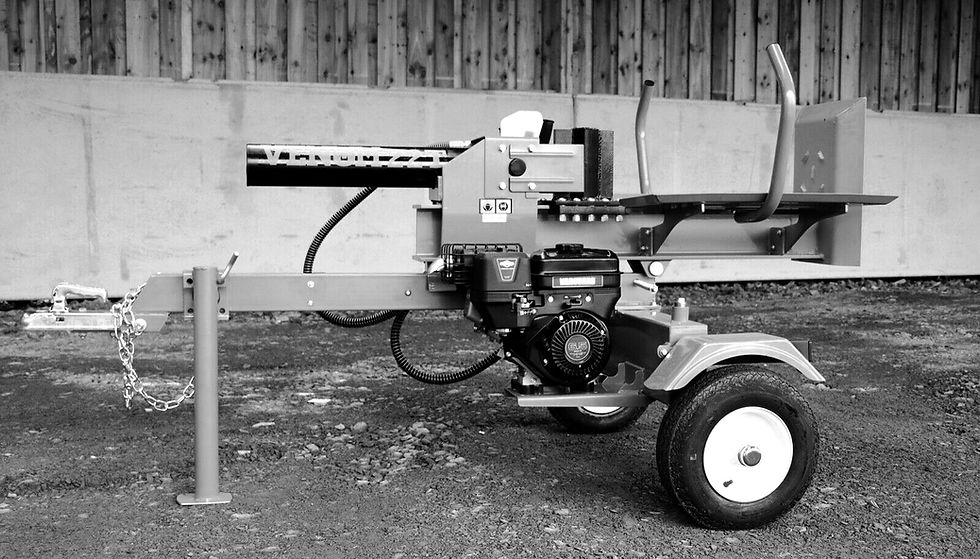Log Splitter Size Considerations
- Beckside Machinery
- Jul 1, 2017
- 3 min read
Updated: Oct 12, 2020

As those experienced in log splitter for sale design will comprehend, large volumes of hydraulic force make it more straightforward to split logs with a log splitter. This is correct in both fixed and mobile splitting wedge designs. However, as the volume of hydraulic force supplied by the hydraulic cylinder rises, so does the required strength of the log splitter parts. For example, large amounts of hydraulic force demand that the support frame, splitting wedge, and stop feature be constructed with sufficient strength to check the hydraulic force without breaking or otherwise becoming disfigured.
Log splitters may also be separated into two categories based upon their orientation during handling—horizontal splitters and vertical splitters. Usually speaking, horizontal splitters need logs to be positioned horizontal and approximately parallel to the surface on which the log splitting machine is set. Horizontal hydraulic log splitters and petrol log splitters work well for shorter, lighter logs. However, horizontal splitters can be awkward to use when splitting large, heavy sections of wood. Workers must lift heavy and irregular shaped logs in order to place them in horizontal splitters. This creates safety hazards to workers as well as disorganisations in the splitting process. All fixed wedge splitters are needed to operate in the horizontal orientation, to allow scope for the log to exit beyond the wedge itself.
Current horizontal-type tractor log splitter configurations are often large and bulky, making them challenging to both transport and store when not in use. The shape of the log splitters themselves has traditionally prescribed size specifications. In both the fixed wedge and movable wedge variants, a predetermined “splitting zone” is required to have a specific length. Naturally, the cylinder must be located to accommodate travel through the splitting zone. The width of the splitting zone and the height of the cylinder, when added collectively, require the splitter to be quite long, hence being difficult to handle. Besides, the post-manufacture shipment of these log splitters to retail places and the like is inconvenient and costly due to their size and shape. For example, most popular horizontal-type log splitters are too large to be shipped on a conventional size pallet. Thus, compact log splitters that are sized to place on a standard pallet during shipping would be extremely desirable.
As mentioned above, one common design detail that has made these log splitters large and heavy is the coupling of the splitting wedge or pusher in line with a hydraulic cylinder. As a consequence, the log splitter must be created with a support construction having a longitudinal length that is adequate to account for both the longitudinal portion of the hydraulic cylinder applied to drive the splitting wedge or pusher, along with as the longitudinal length of travel of the splitting wedge (i.e., the range of the “splitting zone”). Due to strength specifications, this support structure is constant (e.g., a single continuous I-Beam support). Consequently, while this type of design is effective in that movement of the hydraulic piston inside the cylinder transmits directly to the splitting wedge because of their positioning in sequence with one another and in essentially the same horizontal plane, the overall dimension of the log splitter is greatly expanded.
If you are after a decent-sized log splitter for sale, such as Rock Machinery venom models, or compact tractor attachments for sale, call Beckside Machinery on 01673 828 965 today.
Comments